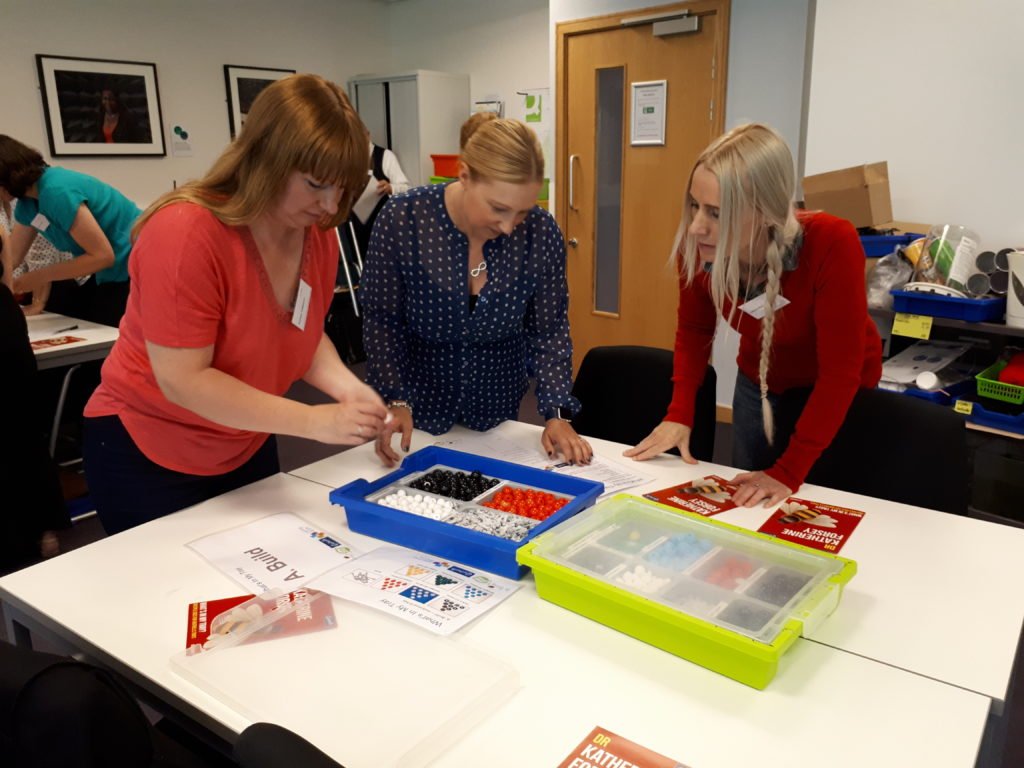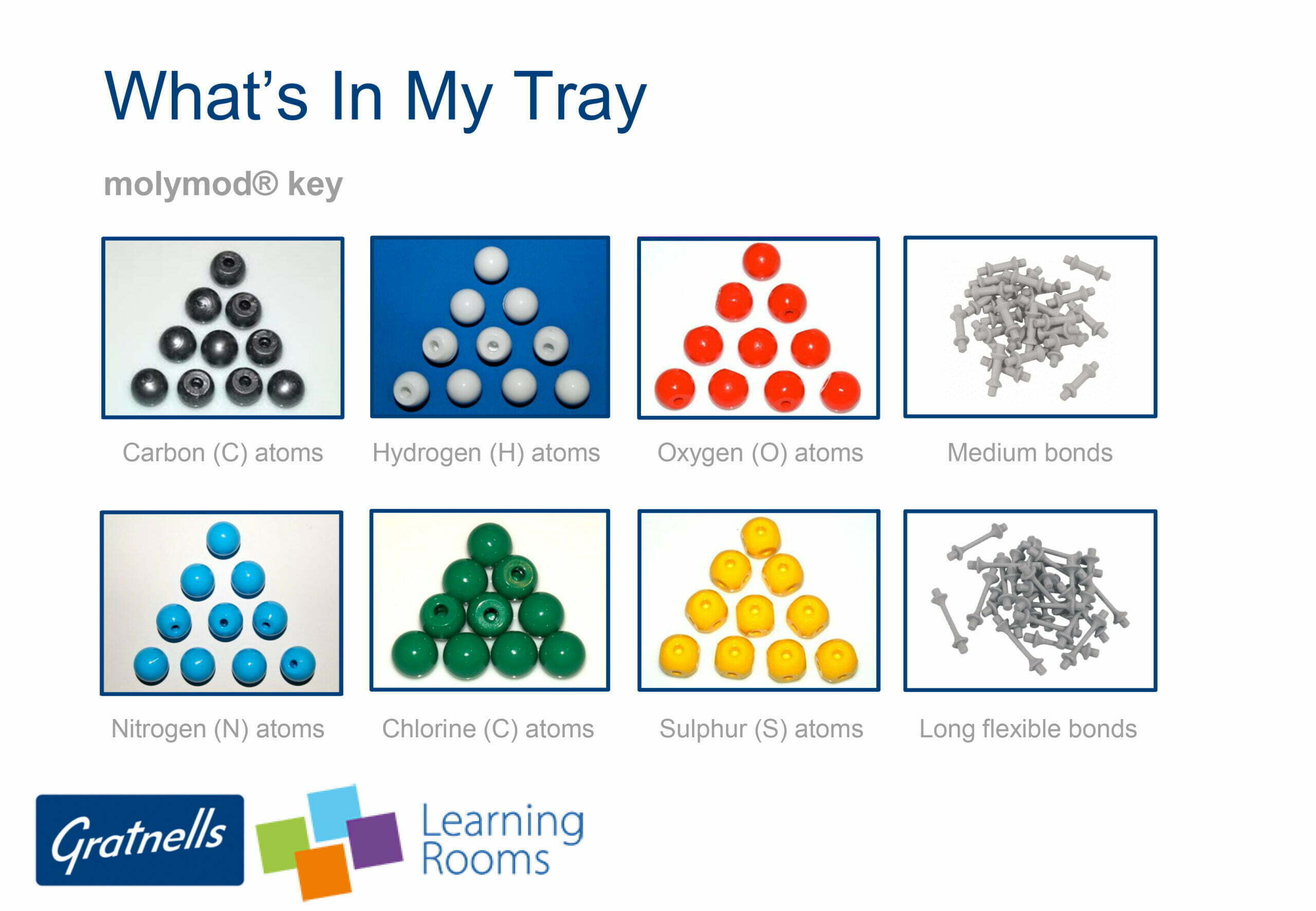molymod® tray
This activity was created as part of a Gratnells What’s In My Tray CPD workshop for secondary science teachers and technicians to support practical work and delivery of the curriculum. It can be carried out as a stand-alone activity for students or combined with other activities from the session to form a STEM carousel.

This activity was inspired by ‘Building Molecules’, a resource produced by the Education Achievement Service for South East Wales. The molymod® key sheet has been modified from an original produced by the Inspire Enterprise Academy Southampton.
You will need (per team of 4):
- 1 x Shallow Gratnells (F1) tray with an 8 section tray insert and lid.
- 21 x Medium (grey) bonds
- 4 x Long flexible (grey) bonds
- 18 x Hydrogen atoms
- 3 x Chlorine atoms
- 3 x Nitrogen atoms
- 4 x Carbon atoms
- 6 x Oxygen atoms
- 1 x Sulphur atom
- 1 x molymod® key – download here <hyperlink to resource>
- Pencil and paper for noting down answers
Tip: All the atoms and bonds required for this activity can be found in one Organic (Student) Set from molymod®
This activity also works for individuals or smaller teams, just increase the amount of time allocated to complete it.
This activity can be repeated multiple times, reusing the same equipment for each team.
Preparation:
- Organise the molymod® into the 8 section tray insert inside the shallow Gratnells (F1) tray and put the lid on. Use one section for each of the eight molymod® components listed.
- Print out one copy of the molymod® key.
- Optional: To make tidying up and resource organisation easier, print out an additional copy of the molymod® key, cut out each of the eight sections, laminate, cut out again and sticky tack each one into a section of the 8 section tray insert to label where each of the atoms and bonds should be stored.
What to do:
- Approach the tray and lift the lid.
- Build the following molecules using the molymod® atoms and bonds provided:
- Hydrogen
- Chlorine
- Hydrogen chloride
- Nitrogen
- Methane
- Ammonia
- Carbon dioxide
- Sulphur dioxide
- Water
- Ethanol (Alcohol)
- For lower age or ability participants, you may wish to also provide the molecular formula for each:
- Hydrogen (H2)
- Chlorine (Cl2)
- Hydrogen Chloride (HCl)
- Nitrogen (N2)
- Methane (CH4)
- Ammonia (NH3)
- Carbon dioxide (CO2)
- Sulphur dioxide (SO2)
- Water (H2O)
- Ethanol (Alcohol) (CH3-CH2-OH)
- Once you have completed the task, take a photograph of your creations to evidence your work.
- Note the answers to the following questions:
- Which of the molecules are elements?
- Which of the molecules are compounds?
Tidy up time:
- Take the molecules apart and return the atoms and bonds to their own sections of the tray insert.
- Replace the lid and leave everything tidy ready for the next team.
Answers:
- Hydrogen, Chlorine, Nitrogen
- Hydrogen chloride, Methane, Ammonia, Carbon dioxide, Sulphur dioxide, Water, Ethanol (Alcohol)
One point per correct answer. You may want to give an additional point for each correctly constructed molecular model.
What is happening?
The coloured spheres represent different atoms and the grey connectors represent the bonds that join atoms together. Atoms can be joined together by bonds. Two or more of the same atom bonded together are called elements. Two or more different atoms bonded together are called compounds. The small number to the right of the atomic symbol is how many atoms of that element there are in that molecule.
Other things to try:
- Differentiate the activity for the age and ability of the intended participants by introducing or restricting the activity to simpler or more complicated molecules as needed. For more complex molecules you will need additional molymod® pieces.
Health & Safety
As with all Gratnells Learning Rooms What’s In My Tray activities, you should carry out your own risk assessment prior to undertaking any of the activities or demonstrations.


